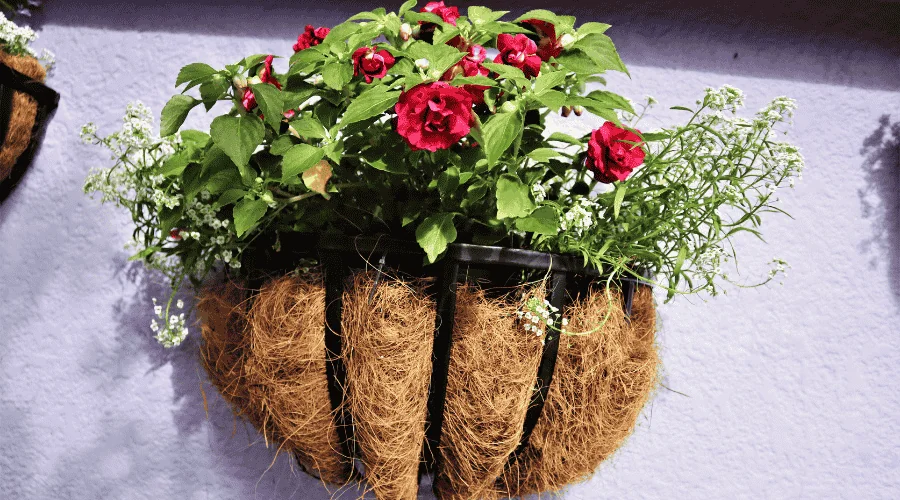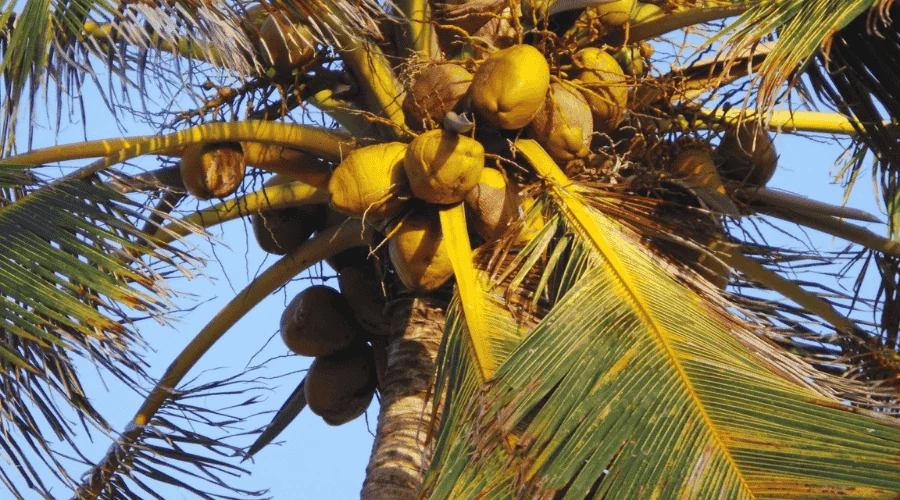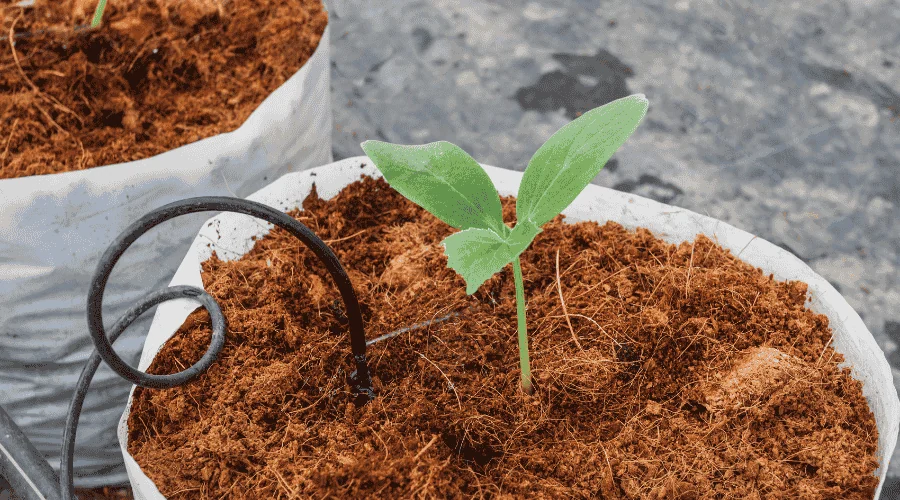By Amanda Rose Newton
If you’ve ever repotted an orchid, mixed your own seed-starting blend, or browsed the garden center’s soil aisle lately, you’ve likely seen coco coir making an appearance. Once a byproduct of the coconut industry, this sustainable growing medium is now one of the most versatile tools a Florida gardener can keep on hand. But what exactly is it, and how should you use it for best results?

What Is Coco Coir?
Coco coir (pronounced koy-er) is made from the fibrous husk of coconuts — the tough outer layer that protects the nut inside. Instead of going to waste, these husks are processed, cleaned, and ground into various textures, from coarse chunks to fine peat-like dust.
It’s typically sold as:
- Coir pith/peat – fine, spongy material similar to peat moss.
- Coir fiber – stringy, hair-like fibers that improve aeration.
- Coir chips – chunkier pieces, great for orchids and aroids.
Environmentally, it’s a win: coco coir is renewable, biodegradable, and often sourced from coconut-growing regions like India or Sri Lanka. It also has a neutral pH (5.5–6.8), making it more plant-friendly than traditional peat moss, which can be quite acidic.
Why Florida Gardeners Love It
Coco coir is tailor-made for our humid yet sandy growing conditions. Florida soils often drain too fast and hold few nutrients. Coir acts like a sponge, holding moisture while still keeping plenty of air around the roots — crucial for tropicals and epiphytes that hate soggy feet.
It’s also resistant to rot, fungus, and compaction, all common Florida soil challenges. And for container gardeners, coir helps prevent that dreaded mid-summer crust that can make water bead up and roll right off your potting mix.

Best Plants for Coco Coir
Coco coir works beautifully with a wide range of Florida-friendly plants, but it’s particularly beloved by:
–Orchids
Many orchids, especially Phalaenopsis, Dendrobium, and Oncidium, love the airy moisture balance that coir chips or blends offer. Mix coir with bark and perlite to give roots room to breathe while keeping humidity high around them.
–Ferns
Species like Boston, Staghorn, and Bird’s Nest Ferns thrive in coir because it mimics their natural growing environment — damp, fibrous organic matter nestled in tree nooks.
–Palms and Aroids
Indoor and patio favorites such as Monstera, Philodendron, and Areca Palm appreciate the coir’s balance of moisture and drainage. It pairs well with compost or pine bark fines to create a rich tropical mix.
–Vegetable Seedlings
For seed starting, fine-grade coco coir can replace peat. It holds just enough moisture for germination and resists mold and algae, even in Florida’s humidity.

Unique and Creative Uses
Coco coir is not just for potting mix! Try:
- Lining hanging baskets – coir liners retain moisture longer than moss, keeping roots cooler.
- Hydroponics – a neutral base for nutrient delivery without soil.
- Compost enhancement – adds bulk and aeration to dense compost piles.
- Mulching houseplants – a light layer of coir fiber helps regulate moisture and keep fungus gnats at bay.
Garden Bug Pro Tips for Using Coco Coir
Hydrate before use
Coco coir is typically sold dry and compressed. Soak it in warm water for 15–20 minutes until it fluffs up. Drain excess water to avoid salt buildup.
Rinse if needed
Some lower-grade coir can have residual salts from processing. Give it a good rinse if your source isn’t pre-washed — especially if you’re growing salt-sensitive plants like bromeliads or succulents.
Mix for balance
Coco coir works best as part of a blend. Try:
- Seed starting mix: 2 parts coir + 1 part perlite + 1 part compost
- Tropical mix: 2 parts coir + 1 part orchid bark + 1 part charcoal or perlite
- Garden soil amendment: 1 part coir to 3 parts sandy soil to retain moisture
Add nutrients
Coir itself is low in nutrients, so supplement with an organic fertilizer or compost tea. Its high cation-exchange capacity means it holds nutrients well once added.
Reuse and recycle
Coir can often be reused after a season if you remove old roots and rinse it. It breaks down slowly, so it’s ideal for long-term use in containers.

Florida Coco Coir Mix Recipes
For those who love experimenting with soil textures, try these Florida-friendly coir recipes tailored for local humidity and drainage challenges:
- Orchid Power Blend: 1 part coarse coir chips + 1 part orchid bark + ½ part charcoal. Perfect for warm, humid patios where orchids risk staying too wet.
- Tropical Houseplant Mix: 2 parts coir + 1 part pine bark fines + 1 part perlite or pumice. This combination keeps roots happy in Florida’s muggy summers.
- Succulent Mix (indoor or outdoor): 1 part coir + 2 parts coarse sand + 1 part perlite for just enough water retention without the sogginess that leads to rot.
- Vegetable Starter Mix: 2 parts fine coir + 1 part compost + 1 part vermiculite for consistent moisture during germination.
Top 5 Coir Mistakes to Avoid
Even though coco coir is forgiving, these common errors can keep plants from thriving:
- Skipping nutrient supplements – Coir is nearly inert, so plants will starve without added fertilizer.
- Using too fine a grade for big-rooted plants – Large roots need chunky texture for air.
- Overwatering – Coir holds water well; it doesn’t mean plants need more frequent watering.
- Not rinsing salty coir – Just like with other pots, salt buildup can occur which will stunt sensitive species, especially bromeliads and orchids.
- Ignoring pH drift over time – Test occasionally and adjust with lime if coir becomes too acidic.

Coco coir combines sustainability, moisture control, and versatility — all major benefits for Florida gardeners dealing with sandy soils and humidity fluctuations. Whether you’re nurturing orchids, starting seeds, or mixing your own tropical potting blend, this coconut-derived material is an eco-friendly way to keep your plants thriving.


